In this article, you can download Halliburton Red Book PDF Cementing Tables For Free ( PDF – PC Software – Apple – Android Google Play). Also, you may be interested In the following:
Halliburton In Oil & Gas
Halliburton was founded in 1919 and is a leading provider of products and services to the energy industry. With a workforce of nearly 70,000 employees spread across approximately 80 countries, the company serves the upstream oil and gas sector throughout the entire lifespan of the reservoir. This includes activities such as locating hydrocarbons and managing geological data, drilling and formation evaluation, well construction and completion and optimizing production throughout the lifetime of the sector. To learn more about Halliburton, visit their website at www.Halliburton.com.
Halliburton Red Book Evolution

Check out the Halliburton Cementing Tables Mobile application! It’s a must-have for anyone in the oil and gas industry. This amazing mathematical tool provides pumping and displacement volumes, API standards for tubing/casing dimensions and strengths, and more. And the best part? It’s completely free and available on both Apple and Android devices via the Apple Store and Google Play. This revolutionary app is a game-changer for engineers and industry professionals, marking a major advancement in the field since the creation of the Halliburton Red Book reference tool 80 years ago. Don’t miss out on this incredible resource!
Back in 1929, Erle P. Halliburton brought on board a young, bright petroleum engineering student named W.D. “Bill” Owsley to embark on a scientific investigation into the mechanical performance of various cement blends. The fruits of his labor were eventually published in Halliburton’s magazine, “The Cementer,” as the Cementing Tables. As time passed, this publication evolved to include tubular data and was ultimately released in 1931 as the Halliburton Red Book, a small yet mighty field reference book.
The Halliburton Red Book PDF reference has been the industry standard for decades, relied upon by professionals worldwide. Around 1,000 copies of the reference are distributed globally every month, alongside 1,000 downloads of the Halliburton cementing tables software, a computer-based version. And now, with the Halliburton cementing tables Mobile application available for download, you can access critical operational information and calculations anytime, anywhere via your smartphone device.

Volume and Heights Between Tubing, Casing or Drill Pipe, and The Hole

Discover the perfect volume for your tubular diameter and effortlessly calculate the annular capacity between your tubular and the wellbore. All you need to do is input either the ID or OD of your tubular and select the ID of the hole. With these parameters, you can figure out the exact annular capacity you need.
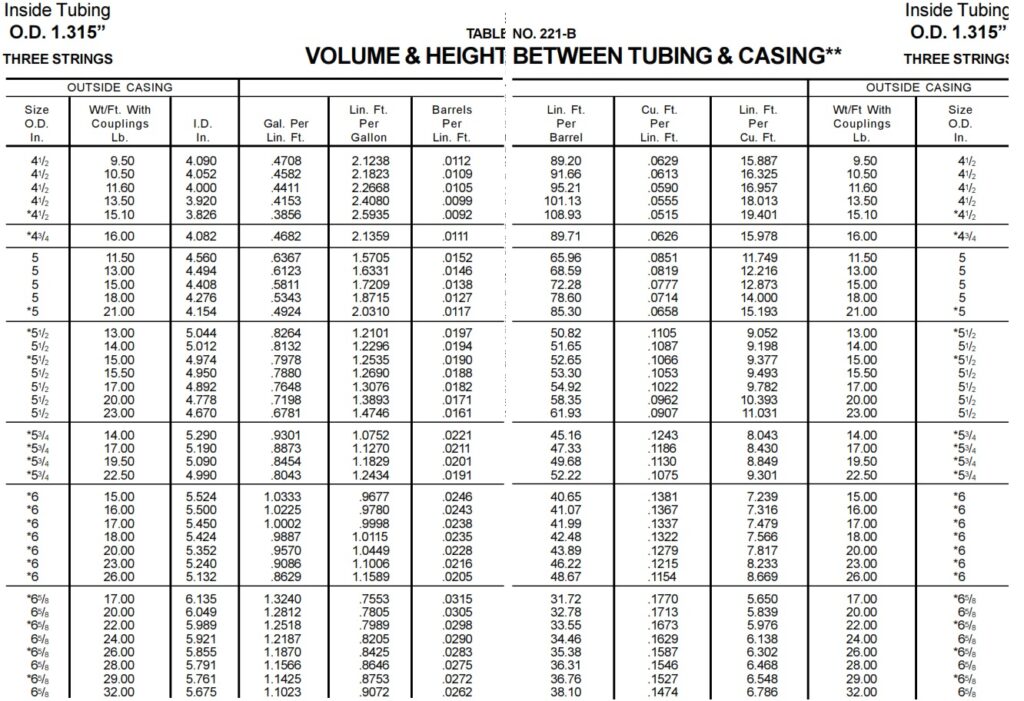
Displacement In Halliburton Red Book
Displacement refers to the space occupied by metal in a string of pipes. The tables separate this displacement into the pipe, upsets, couplings, and tool joints for calculation purposes.

The purpose of this table is to display the amount of space occupied by the metal in a pipe or drill string and to establish a basis for accounting for couplings, upsets, or drill pipe tool joints that are not covered in other tables in this handbook. If you need to make allowances for inner restrictions caused by upsets or similar, while computing the capacity of a pipe string, first determine the capacity without considering inner restrictions as shown in the Capacity section’s tables. Then, use the tables provided in this section to calculate the amount of inner restrictions and subtract it from the initial calculation.
To calculate the annular space behind a string of pipes while considering the outer extensions of couplings, etc., first determine the volume without including the outer extensions (couplings, etc.) by using the tables in the Annular Space Section. Then, deduct the amount of outer extension by using the tables in this section.
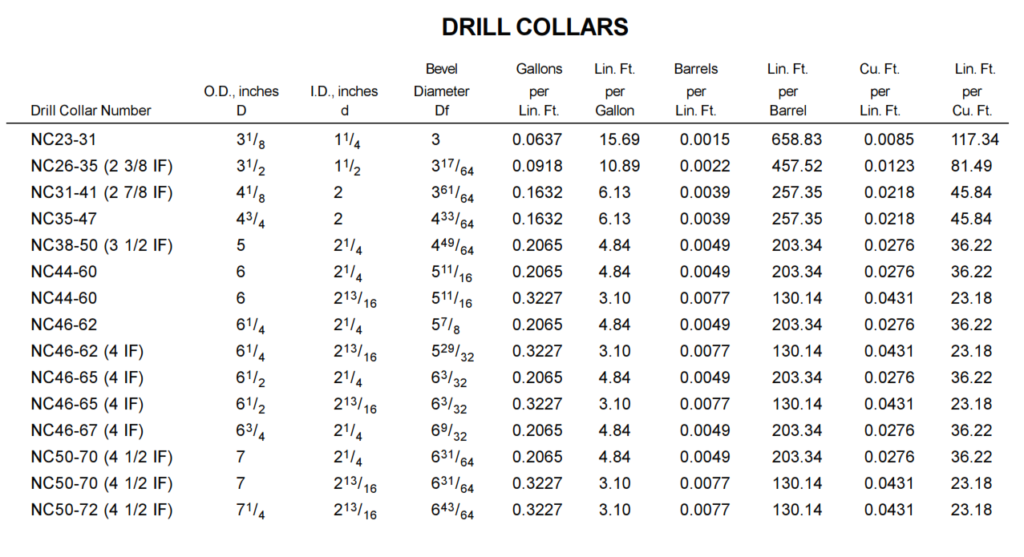


Dimensions & Strengths
In this section, you will be able to retrieve the ID, Drift Diameter, Collapse Pressure and Yield Strength by inputting the Size OD, Grade, and Weight per foot. This is for tubing, casing pipes, and drill pipes. There are also tables and formulas for determining pipe stretches.


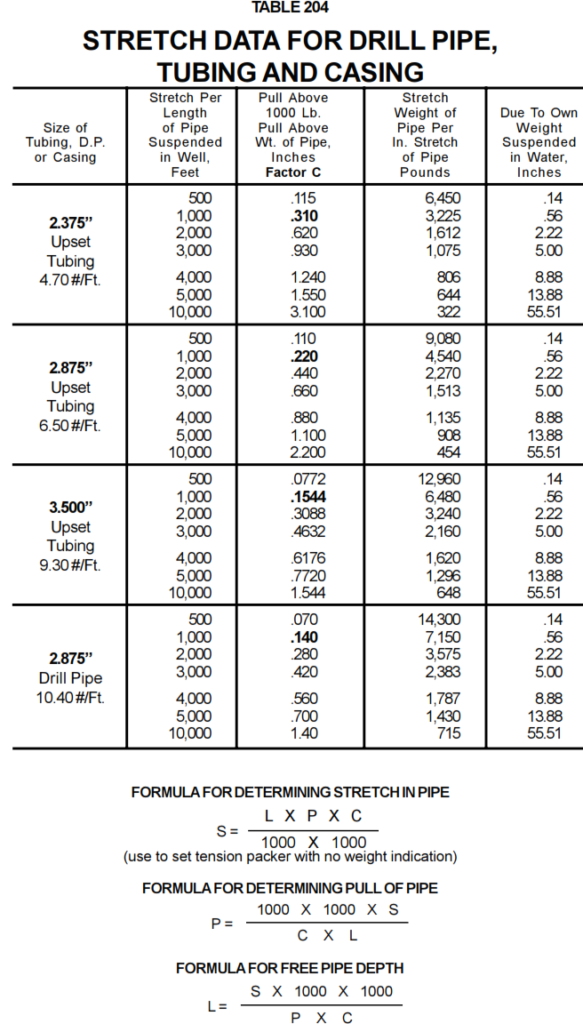

Coiled Tubing Section In Halliburton Red Book
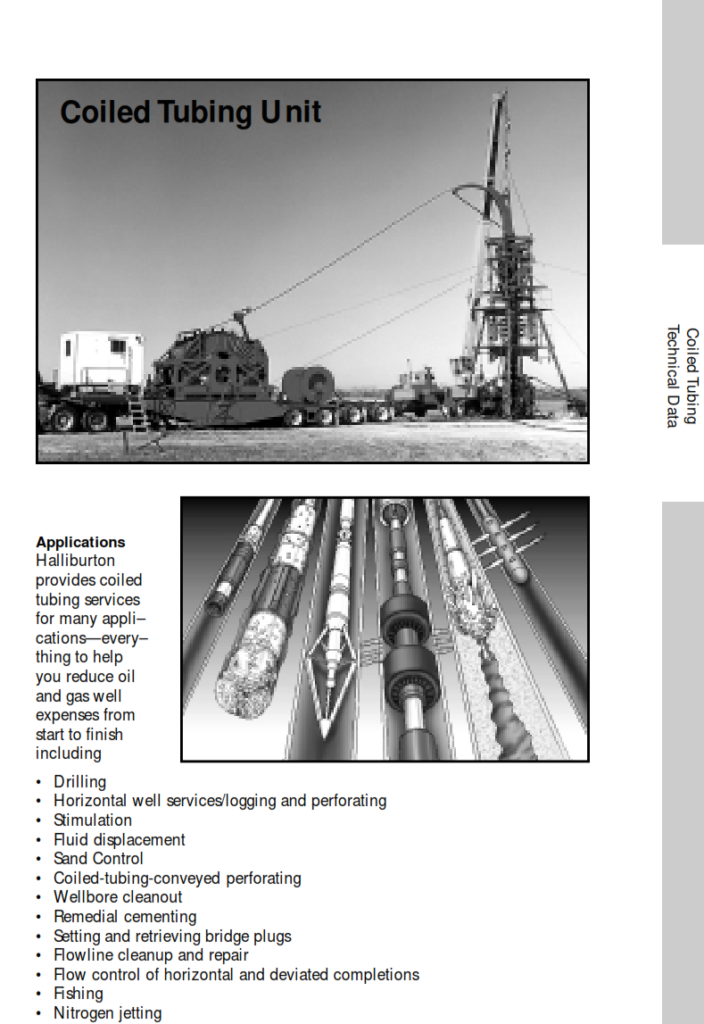
This great Halliburton red book contains also some technical data about coiled tubing. As you can see from the figure below, you can get the wall cross-section area, internal capacity, external capacity, and more.
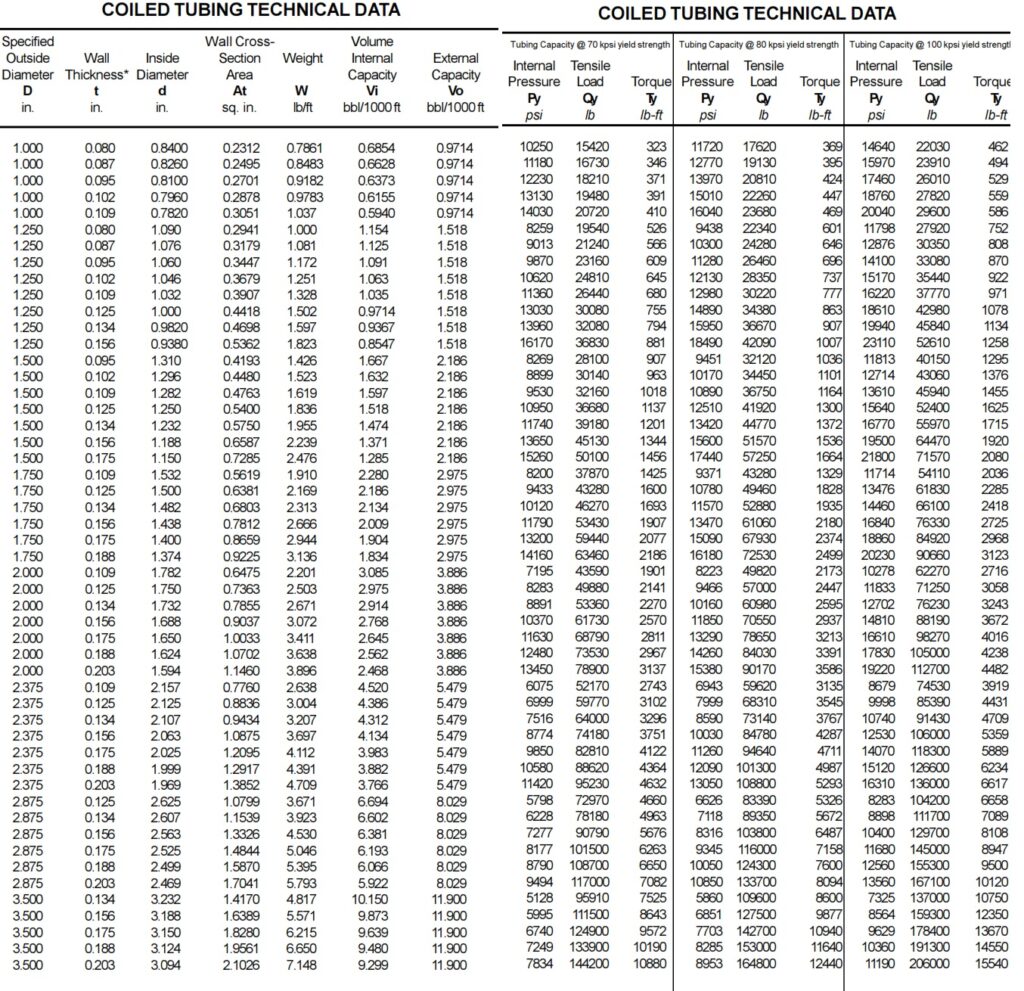

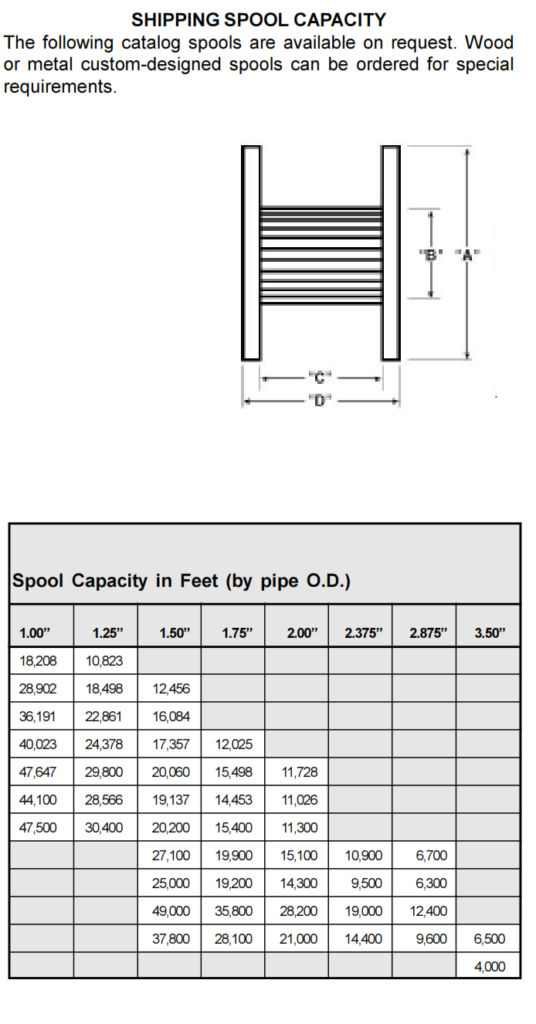

Drilling Bits

The oilfield drilling bits section is mainly about security bits. You will find a lot of info about their products, bit names, recommended WOB, recommended RPM, special features, IADC codes, and how to perform a bit dull.
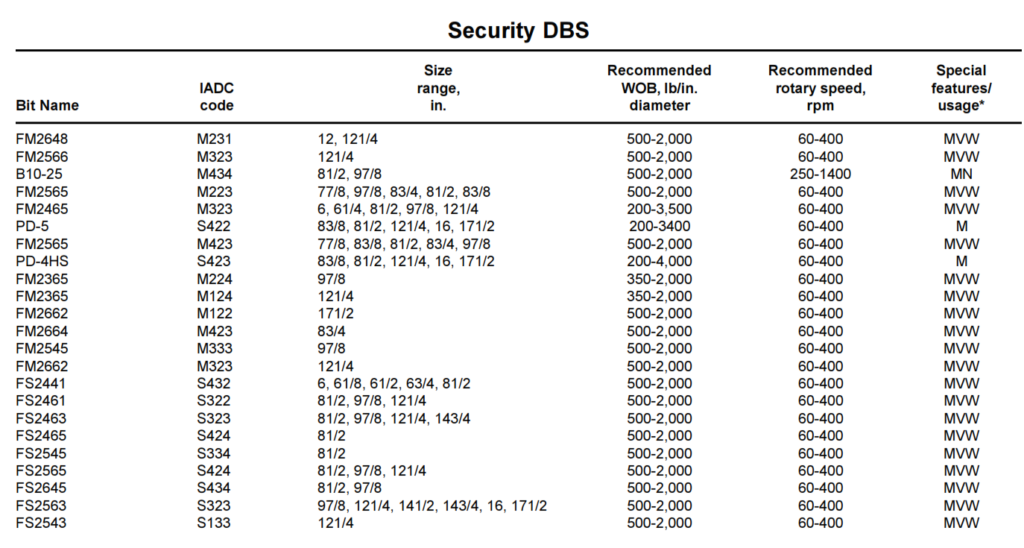

Drilling Fluids
Really, these guys are wonderful. They have included Baroid Drilling Fluid chemicals inside the Halliburton red book. You will find all their products, their description and in what mud type you should use these products.
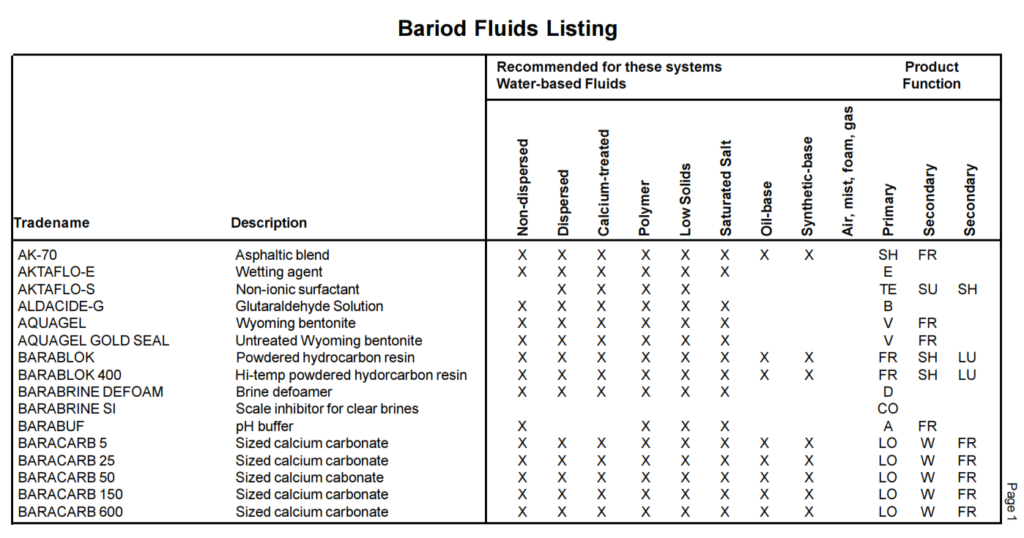
Oil Well Cement & Additives

A notice has been posted in this section stating that the compressive strengths, thickening times, and other properties of the materials mentioned are based on testing multiple samples. Therefore, they should only be used as general guidelines for slurry design and well cementing. The figures provided below are intended to give you a clear understanding of the content of this section in Halliburton Red Book.






Calculations. Formulas & Slurry Tables

- Lengths, Areas, and Volumes
- Geometrical Relationships
- Weights and Measures
- TVD from MD for Deviated Wells
- Cosine Table
- Horizontal Tanks.
- Pipe Capacity
- Volume and Height
- Balanced CMT Plugs
- Displacement
- Buoyancy
- Stretch Data for Drill Pipe, Tubing, and Casing
- Slack-Off Data for Tubing and Drill Pipe
- Effect of Temperature on Steel
- Hydrostatic Pressure
- Hydrostatic Pressure and Fluid Weight
- Effect of Water on Mud Weight
- Mud Weight Adjustment with Barite or Water
- Velocity & Hydraulic Horsepower
- Absolute Volume Factors for Materials in Solution
- Cement Slurry calculations Density, Water Requirements, and Yield Calculations
- Slurry Tables
- Flow Calculations
- Table for Sand Plugs
- Depth Conversion Table
- Volume Conversion Table
- Compressive Strength Conversion Table
- Temperature Conversion Table
- Conversion Percent Salt
- Physical Properties of cement
- of Sodium Chloride Solutions
- of Calcium Chloride Solutions
- of Potassium Chloride Solutions
- API Gravity Conversion Table
- API Gravity of Oil
- Metric Conversion Factors
- Classified List of Units
- Conversion Constants
- Conversion Charts






Download Halliburton Red Book
Halliburton Red Book is a great resource for personnel who work in the oil and gas industry. Let’s say it is a big database related to drilling, mud, and cement operations. When using this application, it will be easier to find important information quickly. It will save a lot of time and effort and help you work more efficiently.

Product Features:
- Access to a vast database of drilling and production data.
- Offers a comprehensive library of fluid and mud properties, pipe data, and conversion factors.
- Allows users to perform calculations for various drilling and production operations.
- User-friendly interface with intuitive navigation and search functionality.
- Secure and reliable, ensuring the confidentiality and integrity of user data.
- Provides real-time updates on drilling and production trends and industry news.
- It supports offline access, allowing users to access data without an internet connection.
- Provides information on wellbore schematics, casing design, and control systems.
- Regular updates and enhancements to ensure the app remains up-to-date and meets the evolving needs of the industry.
- Offers customizable features, allowing users to tailor the app to their specific needs.